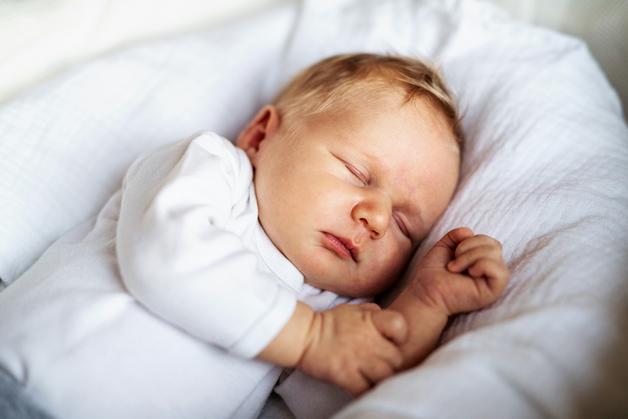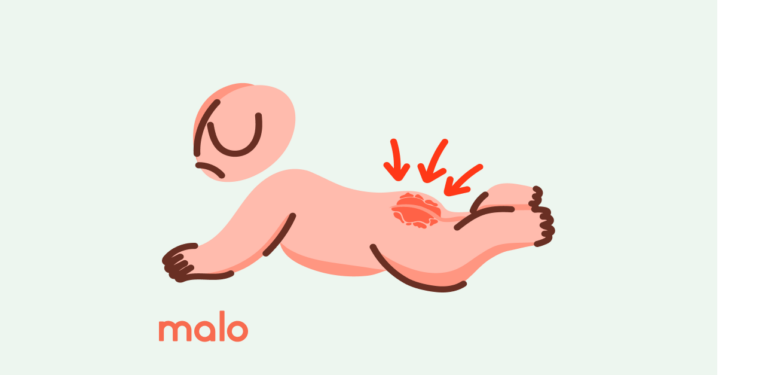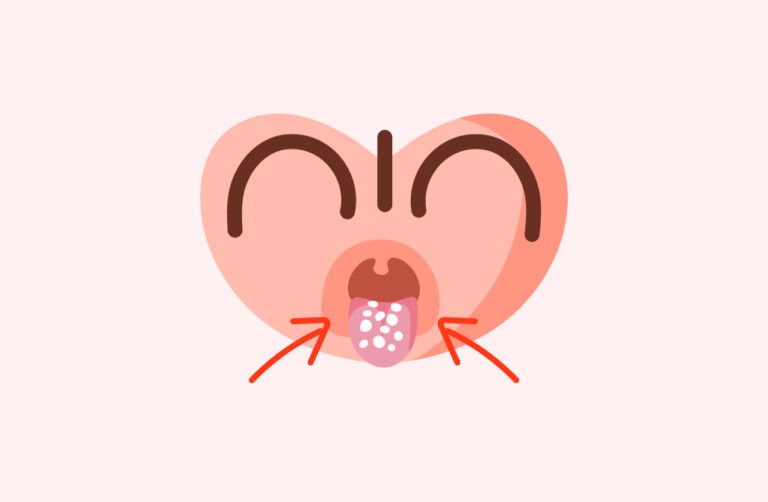For many parents, the evening can feel like crossing an unpredictable jungle—one moment, your baby seems ready for sleep, the next, you’re pacing the living room in the dim light, hoping for a miracle. Questions swirl: “Should I rush to my baby at every little whimper?”, “Is rocking the only way my little one will ever sleep?” and, perhaps most pressingly, “When will we all get some rest?” Baby self soothing—a phrase often heard but sometimes elusive in meaning—offers a glimmer of hope. Imagine a scenario where your baby gently sucks on their hand, hums softly, and settles into slumber without hours of rocking. Is it possible? Absolutely, but understanding how it unfolds, when to expect it, and how to encourage it without stress or guilt requires both science and empathy. Let’s explore what really lies beneath baby self soothing: the facts, the myths, the gentle strategies rooted in developmental biology, and the path to more peaceful nights—for everyone in the family.
What Is Baby Self-Soothing? Why Does It Matter?
Baby self soothing is, quite simply, your child’s emerging skill to settle themselves. Whether it’s falling asleep at bedtime, drifting back after a midnight stir, or calming down after a minor upset, self-soothing is the process through which infants learn to manage their own emotions—without immediate intervention. This ability doesn’t appear overnight. It evolves hand in hand with the maturation of neurological pathways, especially those involved in sleep regulation (think: melatonin production, circadian rhythm synchronisation), and cognitive skills like object permanence. Medical research tells us that most infants are physiologically unprepared to self-soothe before three months of age—their nervous system just isn’t ready. But between 3 and 6 months, some babies begin experimenting: bringing hands to mouth, clasping soft toys, or simply staring at a familiar object with a drowsy gaze.
Why is this autonomy so significant? For babies, longer blocks of restorative sleep help consolidate memory and support brain growth. For caregivers, fewer nightly awakenings mean a chance to recharge, reducing burnout and the risk of postpartum mental health issues. Developing self-soothing also fortifies emotional resilience—imagine your child, later in life, able to handle new environments or minor setbacks with calm confidence.
Creating a Sleep-Friendly Environment
How do you lay the groundwork for baby self soothing? The answer often begins long before bedtime. Consider the sensory world of your baby: is the room too bright, too noisy, or just right? Clinical guidelines recommend a cool, dark, and quiet bedroom—typically around 19–20°C (66–68°F). White noise devices can mask the unpredictable sounds of city life or bustling households, while soft, neutral colours and dim lighting reduce unnecessary stimulation. Routine matters. Watch closely for biological sleep cues—rubbing eyes, yawning, growing still. Acting on these signals rather than the clock itself can make all the difference.
The Power of a Predictable Bedtime Routine
Does your child know what comes next as night falls? Consistent sleep rituals anchor your baby, signalling that rest is approaching. This could be a gentle bath (warm water soothes and sets the stage for melatonin release), a brief tale in a tranquil voice, or humming a slow, repetitive lullaby. Small, predictable steps—such as saying “goodnight” to a beloved teddy or dimming the lights—help children mentally prepare for sleep, easing separations with familiarity and predictability.
Understanding Readiness: Is My Baby Able to Self-Soothe?
Not every baby will immediately settle with minimal help—or at the same age. A baby resting quietly in their crib, hands exploring their own face, or softly mouthing a fist is exploring early self settling. These subtle shifts often follow periods of feeling safe and secure, underpinned by consistent routines and loving presence. Remember, comparing two babies is like comparing monsoon to summer—the rhythms are simply not the same.
Gentle, Responsive Support: It’s Not ‘All or Nothing’
Contrary to popular belief, encouraging baby self soothing doesn’t mean letting your child “cry it out” unaided. Instead, paediatric sleep experts recommend a balanced, gradual approach. If your baby stirs, pause for a few moments—sometimes, given a window, infants will settle themselves with a soothing behaviour (hand sucking, gentle rocking, humming low). If their cries escalate, offer comfort with a touch or soothing words, avoiding sudden removal from the crib unless necessary for hunger, pain, or illness.
The Science Behind Self-Soothing and Sleep
The journey toward baby self soothing is intricately linked to the maturation of brain structures responsible for regulating sleep-wake cycles, such as the hypothalamus and pineal gland. Early on, babies cycle rapidly through light and deep sleep; as the months tick by, these cycles lengthen, paving the way for periods of quiet alertness in the crib and more consolidated nighttime rest. Medical studies highlight that babies who learn to fall asleep on their own enjoy longer, more restorative sleep phases and show fewer overnight awakenings. The bonus? These children often display remarkable adaptability, coping better with environmental changes or sleep setbacks (think: teething or growth spurts).
Emotionally, self-soothing teaches a unique lesson: “I can manage my feelings, I have ways to comfort myself.” Over time, this skill blossoms into more advanced self-regulation, buffering against tantrums, anxiety, and sleep struggles.
Key Milestones: When Do Babies Start to Self-Soothe?
- 0–3 months: At this stage, the concept of baby self soothing is still out of reach. Babies rely almost totally on caregivers’ nurturing.
- 3–6 months: Watch for embryonic self-soothing signals. Sucking the fist, clasping hands, or lying calmly—even briefly—reflects burgeoning independence.
- 6–12 months: Many infants, especially those laid in the crib “drowsy but awake,” start resettling themselves following minor arousals or brief night wakings.
It’s essential to embrace variability. Some temperamentally “easy” babies latch onto self-soothing early, while others (perhaps light sleepers, or those with medical issues like reflux) might delay. What’s important is gentle support—never pressure or comparison.
Recognising and Encouraging Natural Self-Soothing Behaviours
Babies possess a fascinating repertoire when left to their own devices:
- Sucking hands, thumbs, or a pacifier (a topic of many debates among parents and doctors).
- Gentle rocking, rhythmic head movements, or humming.
- Clasping a soft cloth or blanket for tactile comfort.
Paediatric recommendations note: for babies under 12 months, avoid loose bedding or stuffed toys in the crib—safety is paramount due to SIDS (Sudden Infant Death Syndrome) precautions.
What about pacifiers and bottles? Pacifiers may temporarily lower SIDS risk but over-reliance can make weaning or sleep transitions more challenging. Bottles to sleep blur the lines between hunger and comfort. For older babies (usually beyond a year), a small security object—breathable, no loose parts—can provide tremendous reassurance at night.
Sensory soothing is multifaceted—textures, repetitive motion, parental voice. Observing specific self-soothing cues and waiting a moment before intervening allows babies to strengthen these coping tools.
Practical Techniques to Foster Self-Soothing
- Consistent routine: Begin winding down with a bath, subdued lighting, short story, and quiet singing. Consistency cues the brain, “It’s time to rest now.”
- Drowsy but awake: Place your baby in the crib when relaxed but not fully asleep. Over time, the association between the sleep environment and falling asleep deepens.
- Progressive approach: Gradually decrease hands-on support. Stay close at first, offering your presence, then step further away across successive nights.
- Thoughtful response to crying: Every whimper isn’t a distress call. Watch and wait—sometimes, a few minutes leads to spontaneous self-settling. If distress rises, offer gentle reassurance without immediately lifting the child.
- Optimal sleep setup: Firm mattress, safe sleepwear, no pillows or bumpers, and a cool, dark, distraction-free room—these recommendations align with international paediatric guidelines.
The heart of baby self soothing is in respecting both support and emerging autonomy. Always respond directly to signs of hunger or illness, but over time, trust your baby’s ability to handle minor upsets.
Why Do Self-Soothing Skills Matter for Families?
- Longer sleep for babies: Continuous self-soothing reduces both minor and major sleep disruptions, promoting healthy growth and stronger immunity.
- Emotional resilience: Early self regulation empowers children—future transitions (nursery, sibling arrival) often go smoother.
- Rested, less stressed parents: Better baby sleep allows caregivers to finally rest—lowering fatigue, irritability, even risk of postpartum depression.
- Lifelong benefits: Self-soothing forms the base of adaptability, confidence, and sound sleep architecture well into childhood.
Navigating Common Obstacles
- Refusal to sleep alone: Separation anxiety, especially around 8–9 months, is typical. Short absences with gradual increases, combined with a familiar bedtime routine, can gently build comfort.
- Frequent night wakings: Consider medical triggers (teething, hunger, discomfort), check routines, and ensure exposure to natural light during the day for better circadian alignment.
- Sleep regressions: All babies hit bumps (growth spurts, major developmental milestones). Consistency and sensitivity will get you through; sometimes a more hands-on phase is needed.
- Pitfalls to avoid: Overstimulation before sleep (screens, lights, loud play), inconsistent sleep routines, rigid scheduling without tuning into your child’s cues.
If persistent difficulties arise—excessive night waking, feeding problems, behavioural changes, or little progress—consult with a trusted paediatrician or sleep expert for personalised strategies.
Safe and Meaningful Alternatives to Pacifiers
For little ones above 12 months, introducing a soft, safe comfort item during sleep can be reassuring—check for breathable materials, no loose attachments, and suitability for your child’s age. Prefer very young infants to skin-to-skin, soothing touch, gentle rocking, and rhythmic calm sounds. Some parents weave cultural practices—co-sleeping, gentle massage, special songs—into the bedtime fabric, finding balance between emotional closeness and healthy independent sleep skills.
Common Myths and Realities
- Self-soothing is not abandonment: Responding with warmth and gradual space is entirely different from ignoring genuine distress.
- Newborns cannot self-soothe: The neurological basis for self-soothing emerges only after several months.
- Pacifiers don’t “damage” attachment: If used judiciously and discontinued near toddlerhood.
- Attachment and self-soothing are compatible: Trust and emotional availability bolster independence; one nurtures the other.
When a setback occurs, revisit your approach—sometimes a few nights of extra closeness are better than prolonged struggle. Monitor for shorter fussiness periods or more independent resettling as positive progress markers.
Key Takeaways
- Baby self soothing emerges gradually, typically from 3 to 8 months, but each child’s path is distinctly individual.
- A nurturing, consistent routine, plus a sleep-friendly environment, lay the foundation for both baby and caregiver wellbeing.
- Gentle, responsive support and gradual fading of interventions build confidence and emotional health.
- If sleep challenges persist, expert professionals and digital tools offer tailored, up-to-date support.
- Explore the application Heloa for free child health questionnaires and personalised guidance on your journey.
Questions Parents Ask
When do babies usually start self-soothing?
Self-soothing typically develops sometime between 3 and 6 months, but early signals can appear as soon as a month or two in the form of hand sucking or gentle face rubbing. Each baby brings their unique rhythm—no need for comparison or worry if the timeline is different for you.
Is encouraging self-soothing harmful for young babies?
Allowing your baby to practise self-soothing is part of healthy emotional and neurological growth. During the initial months, your infant will still rely heavily on your touch and presence, but gentle encouragement—within their developmental readiness—lays a safe, secure base for later independence.
What steps can I take if my baby struggles with self-soothing?
Many little ones find self-soothing challenging at first. Start by building familiar, calming pre-sleep rituals and wait a few moments when your baby is fussing—sometimes, a short pause allows them to settle. If sleep problems persist or you’re feeling bogged down, connect with a healthcare provider for more tailored strategies.
Should I use a pacifier or comfort object?
Pacifiers are widely used and can help soothe some infants, but use them with care and plan to discontinue as your child nears their first birthday. For older babies, soft, safe comfort objects offer extra reassurance.
How can I tell if my baby is learning to self-soothe?
Watch for calm periods in the crib, hand-to-mouth motions, delayed demands for pickup, or moments where your baby stirs at night then quietly returns to sleep.
Can self-soothing affect attachment or emotional bonds?
Secure attachment flourishes with warm, consistent responses. Facilitating self-soothing in a gentle fashion doesn’t disrupt this bond; rather, it nurtures emotional stability and trust, both now and as your child grows.
What if nothing seems to work?
Sleep struggles can be overwhelming and testing. If you’re concerned about persistent sleep issues or developmental changes, trust your instincts—reach out for personalised support from medical professionals, and explore helpful resources like the application Heloa.
Empowering your child in baby self soothing is a journey—one that gently balances science, support, and the loving intuition every parent develops over time.
Further reading :









